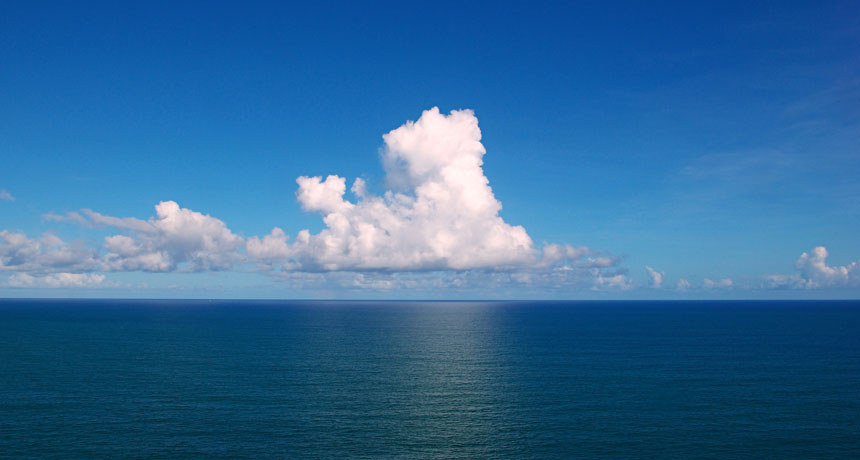‘Waterworld’ Earth preceded late rise of continents, scientist proposes

SAN FRANCISCO — Earth may have been a water world for much of its history, a new proposal contends. Just like in the Kevin Costner movie, the continents would have been mostly submerged below sea level. Previous proposals have suggested that Earth’s land area has remained comparatively unchanged throughout much of geologic time.
But geoscientist Cin-Ty Lee of Rice University in Houston proposes that Earth’s continents didn’t rise above the waves until around 700 million years ago, when the underlying mantle sufficiently cooled. Though many scientists are unconvinced, that continental rise may have contributed to the rapid diversification of life known as the Cambrian explosion. “The Earth is cooling and that actually has manifestations that dictate how life goes,” Lee said December 15 at the American Geophysical Union’s fall meeting.
Earth’s first continental crust formed billions of years ago. Slabs of this crust “float” above the underlying mantle like icebergs, with relatively cold roots than can extend tens of kilometers into the mantle. A continent’s elevation depends, in part, on the size of its root and the density of the mantle.
Earlier in Earth’s history when the mantle was hotter and less dense, the continents sat largely below sea level with only mountains peeking above the water’s surface, Lee proposed. The cooling of the mantle over time increased the relative buoyancy of the continents and lifted the landmasses above sea level. Considering mantle cooling rates and Earth’s topography, Lee proposes that this expansion of Earth’s dry land took place around 1 billion to 500 million years ago and lasted about 100 million years.
The new land would have altered carbon and nutrient cycles, Lee suggested. These effects could help explain large shifts in Earth’s climate around this time and might have nourished the Cambrian explosion. During that time, around 540 million to 500 million years ago, forerunners of the major groups of animals — from insects to mammals — first emerged.
This tale of rising continents may be overly simplistic, said Laurent Montési, a geodynamicist at the University of Maryland in College Park. Other factors such as the mass of the continents, the amount of water in the oceans and the rate of new crust formation on the seafloor could affect sea levels relative to the continents. The idea is worth considering, he said, “but the evidence is not completely there yet.”